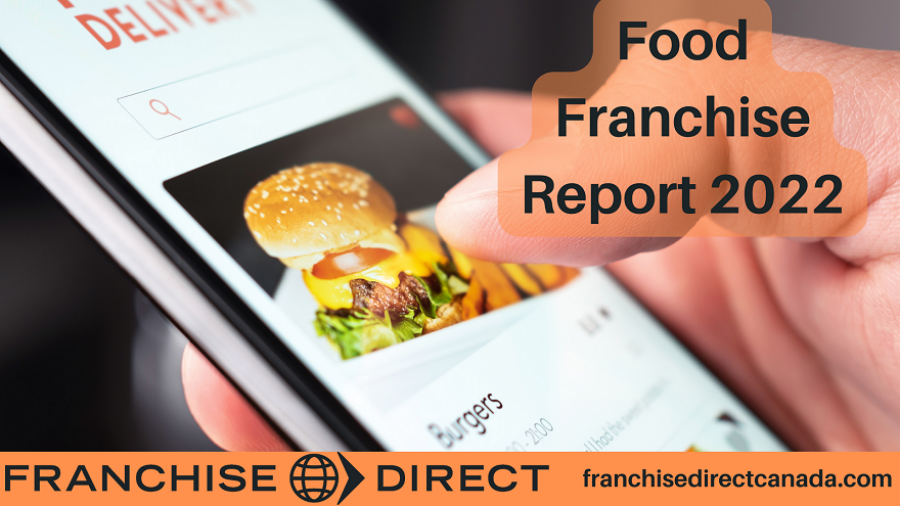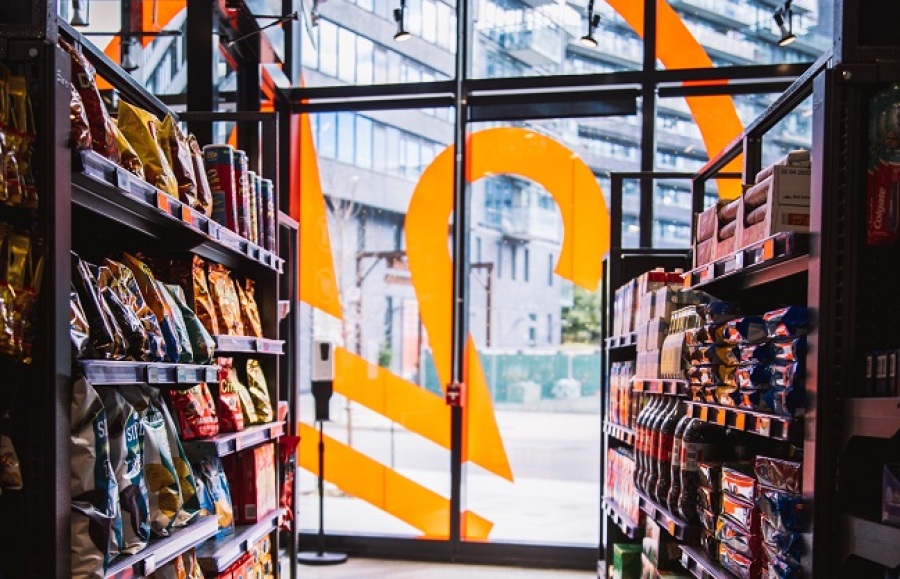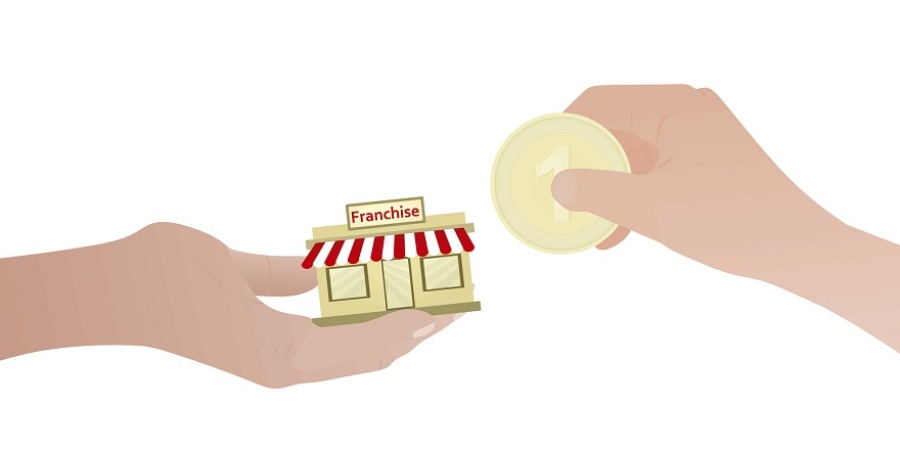🕒 Estimated Reading Time: ~8 minutes

Around 40% of the approximately 1,300 franchise systems in Canada are a part of the food industry. Of these franchises, the Canadian Franchise Association (CFA) divides them into five categories:
- Baked Goods / Coffee / Donuts
- Dine-in Restaurants
- Grocery / Specialty Shops
- Meal Assembly
- Quick Service Restaurants (QSRs)
Industry Outlook for 2022
According to Restaurants Canada, there should be cautious optimism when it comes to the industry returning to pre-pandemic economic levels soon.
“There is definitely a lot of pent-up demand out there,” says Chris Elliott, Restaurants Canada’s senior economist. “Survey after survey conducted by Restaurants Canada show that Canadians miss dining out with their friends and family. And that’s why we are forecasting improved sales in the second quarter of 2022, across all segments, compared to the first quarter of 2022.”
The organization expects the Canadian commercial food service industry to grow substantially throughout 2022. The forecast is for a 22% increase over the year 2021, which would be CA$74.8 billion—approximately 3% below where sales stood just before the pandemic. A big jump is expected from QSRs, in particular, as it is forecasted that the industry segment will grow to CA$37.4 billion nationwide.
Among the biggest trends to look out for is “the need for at-home delivery and online ordering to continue and thrive over the next five years, especially with more and more QSRs developing an online presence,” says the organization.
Food Franchise Industry Trends
Here are a few of the latest trends occurring in the Canadian food franchise industry.
Getting Leaner and the Growth of “Ghost Kitchens"
”Operators are getting leaner on multiple fronts, from downsized staff to smaller unit footprints to trimmed menu selections, in an effort to respond to changing conditions. In 2022, expect restaurant chains to accelerate investments into more compact models that service delivery and takeout while operating efficiently with fewer workers on hand,” say Aimee Harvey and Katie Belflower, editors at research firm Technomic.
While it predates the pandemic, a leaner, more compact style of food franchise that has blossomed because of pandemic-related factors such as reduced indoor dining, labor shortages and supply chain issues is the ghost kitchen.
A ghost kitchen is essentially a restaurant without the dining space. Many ghost kitchens prepare several types of food as they can be shared or rented out by different brands in a commissary-like fashion.
These spaces commonly reduce financial overhead to their owners by offering only delivery or to-go operation. “You're not putting all the money for the equipment, you're not waiting for your building to be built, you're not putting hundreds of thousands of dollars in,” says Amrit Maharaj, chief operating officer of Coho Commissary.
Further, the concept allows its owner to focus on finding cheaper real estate, since foot traffic or a busy dining room won’t be necessary to drive revenue. Per a CBC article, rental prices for a Coho ghost kitchen in Vancouver range from $750 to $1,800 a month, depending on the size and requirements for the space. Compare those costs to a full restaurant monthly lease, which could range from around $2,400 to $10,000 depending on the area of the city.
When it comes to exploring the ghost kitchen as a franchise option, according to Gary Prenevost, president of FranNet of Southern Ontario and Eastern Canada, caution should be exercised because it is “still in relative infancy.” However, “one can take some comfort in the fact many major food franchise brands are exploring this model.”
One of these major food franchise brands is Dickey’s Barbecue Pit. Of the new option in its franchise arsenal, Laura Rea Dickey, CEO of Dickey’s, said: “Virtual kitchens are a unique franchising opportunity that gives us a new and innovative way to capitalize on consumer trends at a low cost. Delivery is a rapidly growing channel in our industry right now, and we believe it will continue to be a preference for guests post-pandemic.”
Automation and Urbanization Lead to the Rise of Grocery Franchise Aisle 24
In 2015, John Douang had an idea: Create a small commercial store that had a better work-life balance than the one his father’s convenience store did. “My dad worked 14 hours a day. If he wanted to take us on vacation, he had to close the store.”
Eventually, with his wife and brother on board, Aisle 24 (originally Unattended Markets) was launched—and with it a new way to grocery shop.
Aisle 24 franchises feature a cashier-less, small footprint (300 to 600 sq. ft.) grocery market concept. The stores not only capitalize on technological advances, but also the boom in the urban Canadian residential property market, which has increased demand for a last-minute shopping place.

It also didn’t hurt that the company’s business model was amazingly suited for what would come in the era of social distancing and contactless service brought on by the pandemic.
“At present, we are seeing a huge influx of people wanting to start their own businesses and are opting for new innovative services that are future proof,” Douang told the CFA. “As we grow and cement our position as a leader in technology-enabled convenience and grocery retail, our goals are to have a network of Aisle 24 Markets in every community in Canada and we’ve got our sights on U.S. and international markets.”
What does all of this mean for potential franchisees? It means that they gain access to a business system with a lower cost of entry when compared to other grocery models that involves a “moderate time commitment.”
Franchisees keep an eye on their store’s operations and inventory, including expiry dates, via remote monitoring. With that data, they can decide when to visit their store to clean and restock—typically two or three times a week. Per the company’s first franchisee, David Thomas, it can mean working 20 hours over a 7-day period, including time spent doing administrative and customer service duties as well.
Canada’s Most Popular Coffee Franchise Follows the Snowbirds
As many as one million Canadians, commonly referred to as “snowbirds,” make their way down into the United States. during the winter months. The most popular U.S. states for Canadian snowbirds are Florida, California, Arizona, Hawaii and Texas, according to Snowbird Advisor, a website dedicated to these travelers.
And it’s that group that Tim Hortons is seeking to follow south to continue its expansion.
Currently, the popular Canadian coffee chain is the third largest in the U.S. with locations primarily concentrated in states that border Canada such as New York, Michigan and Ohio. However, the company now feels the time is right to cash in further south with its sizable snowbird population.
Part of the reasoning for making the move now is an “extensive” uptick in Tim Hortons pre-packaged coffee sales throughout the U.S., particularly in those areas. “It’s a good indicator of awareness, as well as demand for our products, so there’s a number of markets in the U.S., south of our southernmost restaurants: places like Texas, like Florida,” Jose Cil, CEO of parent company Restaurant Brands International, told CNBC.
“Demand is strong. We just need to be there to meet it,” says Cil, who estimates that “between snowbirds and people that have moved down to Florida permanently [as retirees], there’s more than 3.5 million Canadians” who could serve as a solid foundation of customers as the rest of the U.S. becomes more familiar with the brand.
Finding Your Food Franchise
Prior to investing, prospective franchisees should do their research as well as carefully review any documentation provided to them by the franchisor.
In six provinces, franchisors are required to provide a Franchise Disclosure Document (FDD) to the prospective franchisee that contains detailed information on all systems, procedures and costs associated with that franchise. These provinces are Alberta, British Columbia, Manitoba, New Brunswick, Ontario, and Prince Edward Island. By law, the FDD must be presented to the prospective franchisee before a prospective franchisee pays any money or enters into an agreement relating to the franchise.
It’s important to note that while many initial and ongoing costs are detailed in the FDD, there are some costs inherent to business ownership, like employee wages or utility costs, that aren’t.
The Initial Investment and Opening Costs
The amount necessary to open a franchise varies depending on the unique business system and execution requirements.
The opening costs for a food franchisee can depend on many factors, including but not limited to: the franchise fee, land and building costs, training expenses (such as travel and living expenses, not the actual training courses), grand opening advertising and marketing costs, and more.
One of the most important variables in how much it costs to open a franchise is the type of franchise being opened and how big it is. Commonly, the two types of food franchise offered are traditional and non-traditional. Traditional franchises are usually the biggest option. They are typically standalone buildings where the service of the franchise is the only business offering. Non-traditional franchises are smaller, and typically located within another building like airports or gas stations. Other food franchise types include kiosks, trucks, and satellites.
Prospective franchisees should keep in mind that any estimate given to them to open a franchise is just that—an estimate. Prospective franchisees should review the figures presented with a business advisor, taking into consideration their unique circumstances, before making the decision to enter into a franchise agreement.

Ongoing Franchise Fees
Throughout the length of the agreement there are costs for being a part of the franchisor’s business system. These costs include items such as royalty fees, charges for technical support, and continued advertising/marketing costs.
The most common is the royalty fee. Royalty fees are assessed for the continued use of the franchisor’s trademarks and patented processes, along with certain types of operational support. In addition to regularly assessed fees, other fees are charged on an “as needed” basis such as audit fees, or costs for additional, non-mandatory, training.
Start your food franchise search today by searching our collection of a number of food franchises actively seeking franchisees in Canada.

















